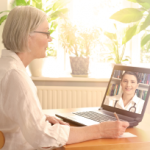Overall, however, nine in ten patients said they would consider a video visit in the future, even if they didn’t go to their scheduled visit during the study.
One drawback of the study is that it’s old—the video visits happened several years ago and technology used in 2015 may look a lot different than what’s possible today. Patients in the study were also fairly affluent and educated, and it’s possible results would look different for people with lower income and education levels.
There’s also a limit to what types of medical conditions may be suitable for telemedicine checkups, said Jay Portnoy, MD, medical director of telemedicine at Children’s Mercy Hospital in Kansas City, Mo.
“The most common issues dealt with include colds, rashes, behavior issues and common issues that are embarrassing such as hair loss, erectile dysfunction, birth control and so on,” Dr. Portnoy, who wasn’t involved in the study, says by email.
Video visits still might one day replace many in-person checkups, says Michael Barnett, MD, MS, of the Harvard T. H. Chan School of Public Health, Boston.
“We are a long way from that because many people prefer in-person care and technology is still a barrier for many of the sickest patients who don’t use the internet or smart phones,” Dr. Barnett, who wasn’t involved in the study, says by email. “Video visits might help health spending by avoiding unnecessary office visits, but even if they don’t the convenience and time saved from them is very valuable.”
Reference
- Reed ME, Huang J, Parikh R, et al. Patient-provider video Telemedicine integrated with clinical care: Patient experiences. Ann Intern Med. 2019 Apr 30. doi: 10.7326/M18-3081. [Epub ahead of print]



